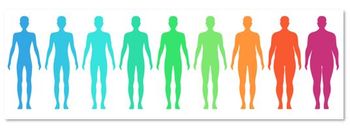
Role of Inflammatory Markers in CVD Risk Assessment
In their Consultations & Comments exchange, "Lipid Ratios and the Prediction of Atherothrombotic Risk" (CONSULTANT, January 2008), neither Dr William Kannel nor Dr William Feeman Jr discussed how measurements of high-sensitivity C-reactive protein (hsCRP) and lipoprotein-associated phospholipase A2 might help guide treatment decisions.
In their Consultations & Comments exchange, "Lipid Ratios and the Prediction of Atherothrombotic Risk" (CONSULTANT, January 2008), neither Dr William Kannel nor Dr William Feeman Jr discussed how measurements of high-sensitivity C-reactive protein (hsCRP) and lipoprotein-associated phospholipase A2 might help guide treatment decisions. What role should tests for these inflammatory markers play in such decisions?
----- Frank M. Shanley, PA
Denville, NJ
The development of atherothrombosis involves an interaction between abnormal lipid levels, inflammation, elevated blood pressure, and thrombosis; there are remedies for each of these components. Every inflammatory marker studied has been found to heighten the risk of cardiovascular disease (CVD), including CRP (7 studies), fibrinogen (18 studies), leukocyte count (7 studies), and decreased albumin (8 studies).1 Other inflammatory markers (such as serum amyloid, sol A; intercellular adhesion molecule; and interleukin 6) are also CVD risk factors.
Large-scale prospective cohort studies consistently demonstrate a relationship between hsCRP and CVD.2 Several statin trials suggest that to optimize outcomes in high-risk patients, hsCRP as well as lipid levels should be monitored. A number of interventions designed to reduce CVD risk (such as diet, exercise, statin therapy, and treatment with angiotensin receptor blockers) significantly lower levels of hsCRP. The JUPITER trial (Justification for the Use of Statins in Primary Prevention: an Intervention Trial Evaluating Rosuvastatin) has determined that patients with normal low-density lipoprotein cholesterol levels but high levels of hsCRP benefit from statin therapy. However, there is not yet direct evidence that reducing levels of hsCRP improves CVD outcomes.
Thus, it is not clear that adding CRP to the standard global multivariable risk assessment greatly enhances risk assessment-although some authorities have claimed that it does. The most recent update of the Framingham Study Multivariable Cardiovascular Disease risk assessment instrument chose not to include CRP levels.
----- William B. Kannel, MD, MPH
Professor of Medicine and Public Health
Boston University School of Medicine
References:
REFERENCES:
1. Danesh J, Collins R, Appleby P, Peto R. Association of fibrinogen, C-reactive protein, albumin, or leukocyte count with coronary heart disease: meta-analyses of prospective studies. JAMA. 1998;279:1477-1482.
2. Ridker PM, Buring JE, Cook NR, Rifai N. C-reactive protein, the metabolic syndrome, and risk of incident cardiovascular events: an 8-year follow-up of 14,719 initially healthy American women. Circulation. 2003;107:391-397.
Newsletter
Enhance your clinical practice with the Patient Care newsletter, offering the latest evidence-based guidelines, diagnostic insights, and treatment strategies for primary care physicians.





















































































































































































































































































































